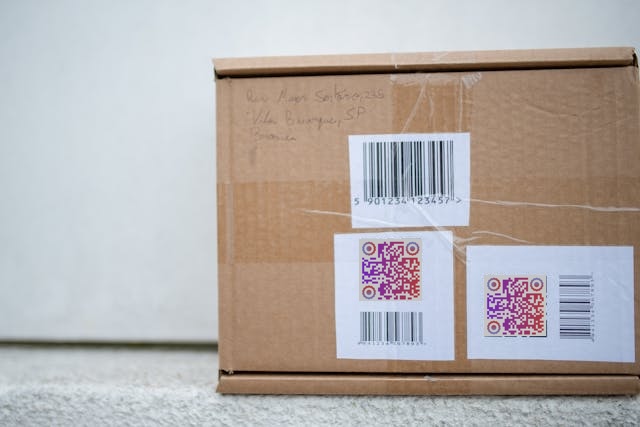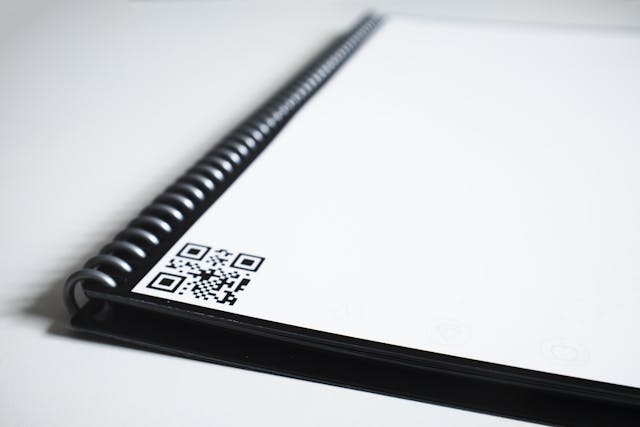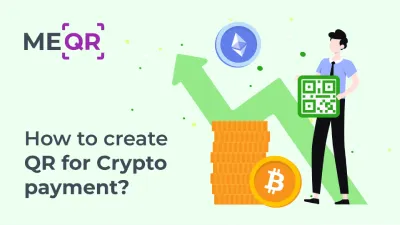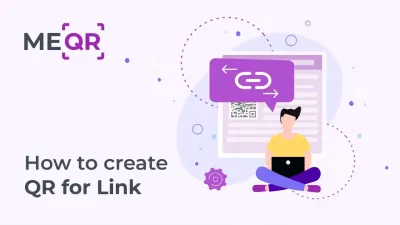The Infinite Potential: How Many Unique QR Codes Are Possible?
To create a QR code for a link, video or picture - click on the button below.

In the modern digital age, QR codes have become ubiquitous, appearing in various forms and applications across the globe. These seemingly simple black-and-white squares hold a world of potential within their intricate patterns.
By delving into the technical and practical aspects that make them a cornerstone of digital connectivity, this article explores how many QR code combinations are there.
Exploring the Number of Possible QR Codes
To understand the infinite potential of QR codes, it is essential to delve into the specifics of how many QR codes are possible. This exploration includes both theoretical limits and practical variations, providing a comprehensive view of QR code capabilities.

How Many QR Codes Are There?
At its core, the number of possible QR codes is theoretically vast. QR codes can vary in size, with versions ranging from 21x21 modules (Version 1) to 177x177 modules (Version 40). Each module can be black or white, resulting in an astronomical number of combinations. For instance, a 21x21 QR code has 441 modules, and each module can be in one of two states (black or white). Thus, the total number of possible combinations is 2441, which is approximately 2.98 × 10132.
Moreover, different error correction levels (L, M, Q, H) influence the total number of valid QR codes. Error correction allows QR codes to be read accurately even if part of the code is damaged or obscured, adding another layer of complexity to the calculation.
QR Code Combinations and Variations
The combinations and variations of QR codes are not limited to different sizes and error correction levels. QR codes can encode various types of data, including numeric, alphanumeric, byte/binary, and kanji. Each encoding option affects the number of possible combinations. Additionally, QR codes can include colors and logos, further expanding the range of unique possibilities.
Here are some key variations in QR codes:
-
Data Types: Numeric, alphanumeric, byte/binary, and kanji.
-
Error Correction Levels: Levels L, M, Q, H, each providing different error tolerance.
-
Sizes: From 21x21 modules (Version 1) to 177x177 modules (Version 40).
-
Customization: Incorporation of colors, logos, and design elements.
These variations contribute to the vast number of potential QR code combinations, highlighting their versatility and adaptability.

The Mathematics Behind QR Code Possibilities
The vast number of possible QR codes is grounded in intricate mathematical principles. Understanding these principles helps to appreciate the complexity and potential, and understand how many possible QR codes are there.

Calculating QR Code Possibilities
The calculation of QR code possibilities involves combinatorial mathematics. For a given QR code version with n × n modules, the number of possible combinations is 2n2. For example, a Version 40 QR code with 31,329 modules has 231329 possible combinations.
Error correction adds another layer to these calculations. The Reed-Solomon error correction algorithm used in QR codes allows for up to 30% of the code to be restored if damaged. Each error correction level (L, M, Q, H) offers different levels of error tolerance, affecting the total number of valid QR codes.
QR Code Number of Combinations
Consider a specific example: a Version 10 QR code with medium error correction (M). This QR code can store up to 174 characters of alphanumeric data. The number of unique QR codes is determined by the number of possible combinations of these 174 characters, considering the 45 possible alphanumeric characters available in the QR code standard. The formula for the total number of combinations is 45174, which is an astronomically large number.
Factors Influencing the Number of QR Codes
Several factors influence the question “How many different QR codes are possible?”:
-
Error Correction Levels: Different levels provide varying degrees of redundancy.
-
Data Density: Higher versions can store more data, resulting in more combinations.
-
Character Encoding: The type of data encoded (numeric, alphanumeric, byte, kanji) affects the total number of possibilities.
-
Design Customization: Inclusion of colors, logos, and other design elements adds to the diversity of QR codes.
These factors collectively determine the immense number of possible QR code variations, each serving different purposes and requirements.

Practical Applications of QR Code Combinations
The vast number of QR code combinations has numerous practical applications, providing utility and security benefits across various domains.

QR Codes in Daily Life
QR codes are used in a multitude of everyday applications, showcasing their versatility and convenience. Some practical uses include:
-
Payments: Secure and quick transactions using mobile payment systems.
-
Ticketing: Event and transport tickets for easy verification.
-
Marketing: Advertising campaigns linking to websites or promotions.
-
Inventory Management: Tracking and managing products in warehouses.
These applications demonstrate how QR codes have seamlessly integrated into daily life, offering solutions that are efficient and user-friendly.
Tools like ME-QR – QR Code Generator simplify the creation of these codes, making it accessible for businesses and individuals to leverage their benefits.
Create
QR Code Now!
Put your QR code link, add name for your QR, select content category and generate!
Create
QR Code Now!
Put your QR code link, add name for your QR,
select content category and generate!

Security and QR Code Possibilities
The security of QR codes is enhanced by their vast number of combinations. Each QR code is unique, making it difficult to duplicate or forge. Applications include:
-
Authentication: Secure logins and identity verification.
-
Encryption: Storing encrypted data within QR codes.
-
Secure Communication: Sharing sensitive information securely.
The extensive number of possible QR codes ensures robust security features, making them a reliable tool for protecting information and verifying identities.

Future of QR Codes: Infinite Potential
As technology advances, the potential applications and combinations of QR codes continue to expand, promising an exciting future.

QR Code Number of Possibilities in Emerging Technologies
Emerging technologies such as augmented reality (AR) and the Internet of Things (IoT) can significantly expand QR code possibilities. For example:
-
AR Integration: QR codes can trigger AR experiences, overlaying digital information in the physical world.
-
IoT Connectivity: QR codes can facilitate the connection and interaction of IoT devices, enabling seamless communication.
These advancements illustrate how QR codes can evolve to meet the demands of future technological innovations.
Innovations Expanding QR Code Possibilities
Recent innovations and future trends are likely to increase the number of possible QR code combinations and uses, including:
-
Dynamic QR Codes: Changing content based on context or user interaction.
-
Advanced Data Storage: Storing larger and more complex data within QR codes.
-
Enhanced Error Correction: Improved algorithms for greater resilience to damage.
These trends highlight the ongoing evolution of QR codes, ensuring their relevance and applicability in an ever-changing technological landscape.

Conclusion
The potential of how many QR codes can there be is virtually limitless, driven by the combination of various factors such as size, error correction, and encoding options. The mathematical complexity behind these codes ensures a vast number of possibilities, providing significant practical applications and security benefits.
As technology continues to evolve, the future of QR codes holds even greater promise, inviting us to explore the infinite potential of these remarkable patterns. The endless possibilities offered by QR codes underscore their importance in our digital world, making them an indispensable tool for communication, security, and innovation.






























